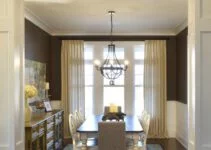Discover how to create a calming sanctuary in your home through the transformative power of decor. This comprehensive guide delves into the importance of white and neutral tones, the warmth of natural wood, and practical tips for combining these elements. Learn how color and materials affect your emotions and well-being and find inspiration for making your space a soothing refuge. Embrace intentional design choices that promote tranquility and enhance your living environment. Transform your home into a peaceful oasis that reflects your personal style!
Introduction: The Power of Calming Decor
Welcome to part 18 of our ongoing video series, where we explore the transformative power of decor in creating soothing spaces within our homes. As we delve into the impact of color and materials, it becomes evident that our surroundings significantly influence our emotions and overall well-being. Colors such as white and neutral tones, complemented by the warmth of natural wood, foster a sense of calm and tranquility.

Research suggests that certain colors can evoke specific feelings. For instance, white is often associated with purity and simplicity, offering a blank canvas that allows light to bounce freely, creating an airy atmosphere. Neutrals, on the other hand, provide a gentle backdrop that promotes relaxation and balance, making them ideal for areas aimed at rest and reflection. Meanwhile, the incorporation of natural wood introduces organic elements that connect us with nature, invoking a sense of grounding and comfort.
Please read our article watch the newly uploaded video from our YouTube channel:
“Grig Stamate – Interior Design Solutions”
https://www.youtube.com/@GrigStamate
50 Calming Interior Decor Solutions – White, Neutrals, and Natural Wood, #18 (video)
Here, you can see other related videos from our channel:
50 CALMING Interior Decor Solutions – White, Neutrals, and Natural Wood, #16 (video)
50 Calming Interior Decor Solutions – White, Neutrals, and Natural Wood, #17 (video)
Why White? The Effortless Elegance
White is often regarded as a fundamental hue in interior decor, and its significance cannot be overstated. The allure of white lies not only in its aesthetic appeal but also in its versatility. It serves as a blank canvas that can effortlessly adapt to various design styles, enhancing the overall ambiance of a space. Whether in a minimalist environment or a more traditionally adorned room, white provides an ideal backdrop that allows other elements, including furniture and artwork, to shine.
One of the most commendable attributes of white is the sense of cleanliness it imparts. A white space can create an atmosphere of freshness and purity, making it particularly favorable for kitchens and bathrooms where hygiene is paramount. Moreover, white reflects light which contributes to a brighter and more open feel. Even in smaller spaces, the use of white can foster an illusion of spaciousness, allowing individuals to enjoy a more expansive living area.
Notably, the variety of shades within the white spectrum offers a unique opportunity to influence mood. From crisp, bright whites to softer, warmer undertones, each variant can evoke different feelings. For example, a cool white may create a modern and sophisticated environment, while a warmer shade can lend a sense of coziness and tranquility. This versatility makes white an essential element in design schemes that incorporate natural wood tones. The contrast between the lightness of white and the organic richness of wood creates harmonious visual interest, inviting warmth and connection with nature into the home. As you contemplate your space, consider how the application of white can enhance both aesthetics and atmosphere.
Neutral Tones: The Gentle Embrace
Neutral colors play a vital role in interior design, offering a sophisticated backdrop that balances and enhances other elements in a room. These shades, which range from soft whites to warm beiges and cool grays, possess an inherent versatility that makes them suitable for any space. When thoughtfully applied, neutral tones can transform a room, creating a tranquil environment that speaks to both elegance and simplicity. By allowing furniture, artwork, and decorative accents to shine, these muted hues help establish a cohesive aesthetic that is both calming and inviting.
The psychological benefits of neutral shades are noteworthy. Research suggests that spaces dominated by neutral tones can promote relaxation and reduce stress levels. The human mind tends to favor simplicity, often finding solace in colors that do not overwhelm the senses. As such, incorporating these gentle hues in living rooms, bedrooms, or home offices can create a serene atmosphere conducive to unwinding after a long day or maintaining focus during work hours. Additionally, the ability of neutral colors to reflect light enhances the feeling of spaciousness, making smaller areas feel more open and airy. Have you ever noticed how a soft beige wall makes a room feel more inviting? Or how a light gray can help illuminate shadows in a dim corner?
Consider how you might weave your favorite neutral hues into your home design. Perhaps soft taupes appeal to you for a cozy living space, or a crisp white invites clarity and focus in your workspace. By thoughtfully choosing your neutral palette, you can create soothing environments that not only reflect your personal style but also foster peace and tranquility in your daily life.
Natural Wood: Bringing the Outdoors In
Natural wood has long been cherished in interior design for its warmth and organic appeal. When incorporated into home decor, wood pieces not only introduce a tactile element but also impart a sense of depth and character that is often missing in synthetic alternatives. The unique grain patterns and rich colors found in natural wood can create a striking focal point, grounding spaces and evoking a connection to the tranquility of nature.
The integration of wood into interior spaces can take many forms, whether through furniture, flooring, or decorative accents. For instance, a reclaimed wood dining table can serve as the heart of a home, where families gather to share meals and create cherished memories. The authenticity of the natural wood often catalyzes conversations, embedding stories in each mark and knot, enriching the narrative of home life. Similarly, wood features like exposed beams or a rustic fireplace mantle can infuse a space with a cozy ambiance, providing a comforting backdrop for various activities, from reading to hosting friends.
Beyond aesthetics, the emotional resonance of natural wood cannot be understated. Many individuals find comfort in the grounding presence of wood, often drawing from childhood memories of outdoor spaces or family gatherings. It reflects a lifestyle that appreciates simplicity and a connection to the Earth. As you design your living spaces, consider sharing your own experiences with natural wood. How has wood influenced your home’s atmosphere or your personal comfort? By embracing natural materials like wood, we foster environments that not only look inviting but also evoke a sense of well-being and peace.
Combining Elements: A Practical Guide
Creating a balanced interior that harmonizes white, neutrals, and natural wood can feel like a daunting task—much like attempting to keep a white couch clean during a spaghetti dinner. However, with careful planning and consideration, this blend can transform your space into a soothing sanctuary. Here are some practical tips to achieve this cohesive aesthetic.
First, think about the layout of your space. Open layouts benefit immensely from a cohesive color palette. Start by painting walls in soft whites or airy neutrals; these shades set the stage for the natural wood elements to shine. Consider using accents like wooden beams or shelves, which will pleasantly contrast against a lighter background. When arranging furniture, opt for pieces that echo your palette—for instance, a gray fabric sofa paired with a reclaimed wood coffee table creates a relaxed yet sophisticated vibe.
Choosing the right furniture is pivotal. Select items that are not only functional but also visually appealing. Look for soft, textured fabrics in neutral tones, as these can bring warmth to the minimalist palette. Consider a beige armchair alongside a sleek white side table, adorned with a small wooden accent to draw the eye. Large furniture should play off the natural wood components, ensuring that no element feels out of place.
When it comes to decor items, less is often more. Incorporate wooden decorative pieces, such as bowls or picture frames, to add character without overpowering the space. Plants also offer a splash of color; their green hues complement both the white and neutral tones while enhancing the natural wood aesthetics. Inviting a bit of nature indoors not only ties the scheme together but also promotes a sense of calm.
Ultimately, the goal is to create a harmonious environment that reflects your personal style. So, as you embark on your decorating journey, embrace the fun and modern versatility of white, neutrals, and natural wood. We encourage you to share your attempts at color combinations—because even when the results may vary, each effort contributes to your evolving home decor story!
Textiles and Patterns: Adding Softness and Character
Textiles play a pivotal role in enhancing the tranquility of any interior space. When aiming to create a calming environment, the choice of fabrics is essential. Linen and cotton are two popular options that embody the essence of soft, neutral palettes. These natural fibers not only provide a soothing aesthetic but also contribute to comfort and durability, making them ideal for various home applications. Incorporating textiles in light beige, soft gray, or muted white can effectively promote a serene atmosphere.
The texture of fabrics significantly impacts the overall vibe of a room. When considering textiles, one should think about different weights and weaves. Soft, fluffy throws can add warmth and comfort to a minimalist setting, while crisp linens can lend a sense of airy sophistication. Layering various textures, such as chunky knits paired with smooth cotton or linen, creates depth within the space and invites tactile engagement. This practice not only boosts coziness but also helps to maintain visual interest without overwhelming the senses.
Patterns also have their place in achieving a calming decor. Subtle prints, such as delicate stripes or understated florals, can enhance the serene ambiance without competing against the overall sense of tranquility. When selecting patterns, it is crucial to choose those that resonate with personal style while still aligning with the neutral environment. A few decorative cushions or an area rug featuring soft patterns can infuse character into the interior without sacrificing the calming effect.
What are your go-to textiles when designing a peaceful space? Have you experimented with various patterns in your home decor? Sharing your experiences can inspire others to embrace soft textiles and patterns in their quest for soothing interiors.
Creating Focal Points: Decor that Inspires Calm
In the realm of interior design, focal points play a crucial role in shaping the ambiance of a space, particularly in a calming decor scheme. These are elements that naturally draw the eye and can evoke feelings of serenity and tranquility. By selecting decor pieces that inspire calm, homeowners can cultivate an environment that encourages relaxation and peace of mind.
Natural wood elements serve as exceptional focal points, offering both warmth and grounding effects. A handcrafted wooden coffee table, for instance, can act as the heart of a living area. Its organic texture and earthy tones resonate well with a neutral palette, seamlessly integrating into spaces adorned with whites and muted colors. Pairing this centerpiece with softly draped fabrics or simple, understated tableware can further enhance its calming presence, fostering an inviting atmosphere.
Another effective approach is to incorporate art pieces that feature serene colors and themes. Artwork that reflects nature, such as landscapes or abstract representations of the ocean, can infuse a sense of tranquility into your home. A well-placed canvas above a sofa or a stunning sculpture on a mantle can serve as attentive points, encouraging contemplation and relaxation. Choosing hues that complement the surrounding decor, such as soft blues, greens, or gentle earth tones, can create a harmonious balance throughout the space.
As you consider focal points in your home, reflect on what elements capture your attention and how you can refine those aspects to inspire calm. It may be an intricate piece of pottery, a potted plant with lush foliage, or even a simple yet striking photograph that resonates with your sense of peace. By thoughtfully curating these decor items, you craft an oasis that promotes tranquility and aligns with the soothing aesthetic of white, neutrals, and natural wood.
The Role of Lighting: A Soft Glow
Lighting plays an indispensable role in establishing the mood within any living space, particularly in interiors designed to evoke calmness. A well-considered lighting scheme can enhance the aesthetics of white and neutral tones alongside natural wood elements, creating a serene environment conducive to relaxation. When transitioning from bright and sterile lighting to softer alternatives, homeowners can transform their interiors into inviting sanctuaries.
One of the most effective ways to limit harshness in lighting is to opt for soft overhead lights. Dimmer switches are highly recommended as they allow for the adjustment of light intensity, enabling one to create a gentle ambiance. In addition to overhead fixtures, utilizing lamps with warm-colored bulbs can create pockets of warmth throughout a room. For instance, table and floor lamps that feature lampshades can diffuse light and soften the overall illumination, enhancing the beauty of your space.
Candles present another excellent option for achieving a soothing glow. The flickering flames and soft glow of candlelight not only contribute aesthetically to calming interiors but also add an element of tranquility. Displaying candles on natural wood surfaces further emphasizes the connection between lighting and materiality, forming an inviting space that encourages relaxation.
To maximize the calming potential of lighting, consider placing multiple light sources at different levels. Layered lighting creates depth and interest, allowing for a tranquil atmosphere that can be modified according to the time of day or the desired mood. Aim for a balance between natural light during the day and soft artificial light during the evening to maintain a serene environment. These lighting strategies will ensure that your home not only embodies aesthetics but also fosters a comforting sanctuary. Engaging with readers, we welcome your favorite lighting experiences, and how they contribute to the overall calming effect of your spaces.
Conclusion: Your Calming Sanctuary Awaits
Creating a calming sanctuary within your home is not just about aesthetics; it’s about fostering an environment that supports emotional well-being. By embracing the principles of white, neutrals, and natural wood, individuals can achieve a space that promotes tranquility and comfort. These elements work collaboratively to create a serene atmosphere, allowing for relaxation and peace amidst the chaos of daily life.
The emotional benefits of a well-decorated space cannot be overstated. A thoughtfully designed room can evoke feelings of calmness and contentment, even when life presents challenges. Incorporating soothing colors and natural materials can transform any area into a pleasant refuge, where one can unwind and recharge. Simple adjustments, such as enhancing lighting or decluttering, can significantly improve the quality of a living space, nurturing a sense of order and clarity.
As you contemplate the changes you want to implement, consider the unique aspects that resonate with your personal taste. Reflect on how your preferred neutral shades and wood textures can be deployed to craft an inviting atmosphere that feels like home. It’s essential to remember that creating a calming space does not have to be an overwhelming task; small, mindful steps can yield substantial results over time.
We invite you to share your plans for embracing these design principles in your home. Whether it is a complete makeover or minor adjustments, showcasing your journey and final outcomes can inspire others in the community. Posting photos or detailing your experiences not only fosters a sense of connection but also encourages the sharing of ideas and creativity. Your calming sanctuary awaits—let the process begin!
Other related posts from our website:
Let’s see here, two of them:
https://howtobuildahouseblog.com/calming-decor-white-neutrals-and-natural-wood-17/
https://howtobuildahouseblog.com/calming-decor-white-neutrals-and-natural-wood-13/
We also sincerely hope you like our ideas from this post, and you have also enjoyed our uploaded YouTube video.
See you next time at another article.
Thank you so much for your time. Bye now!



No Responses